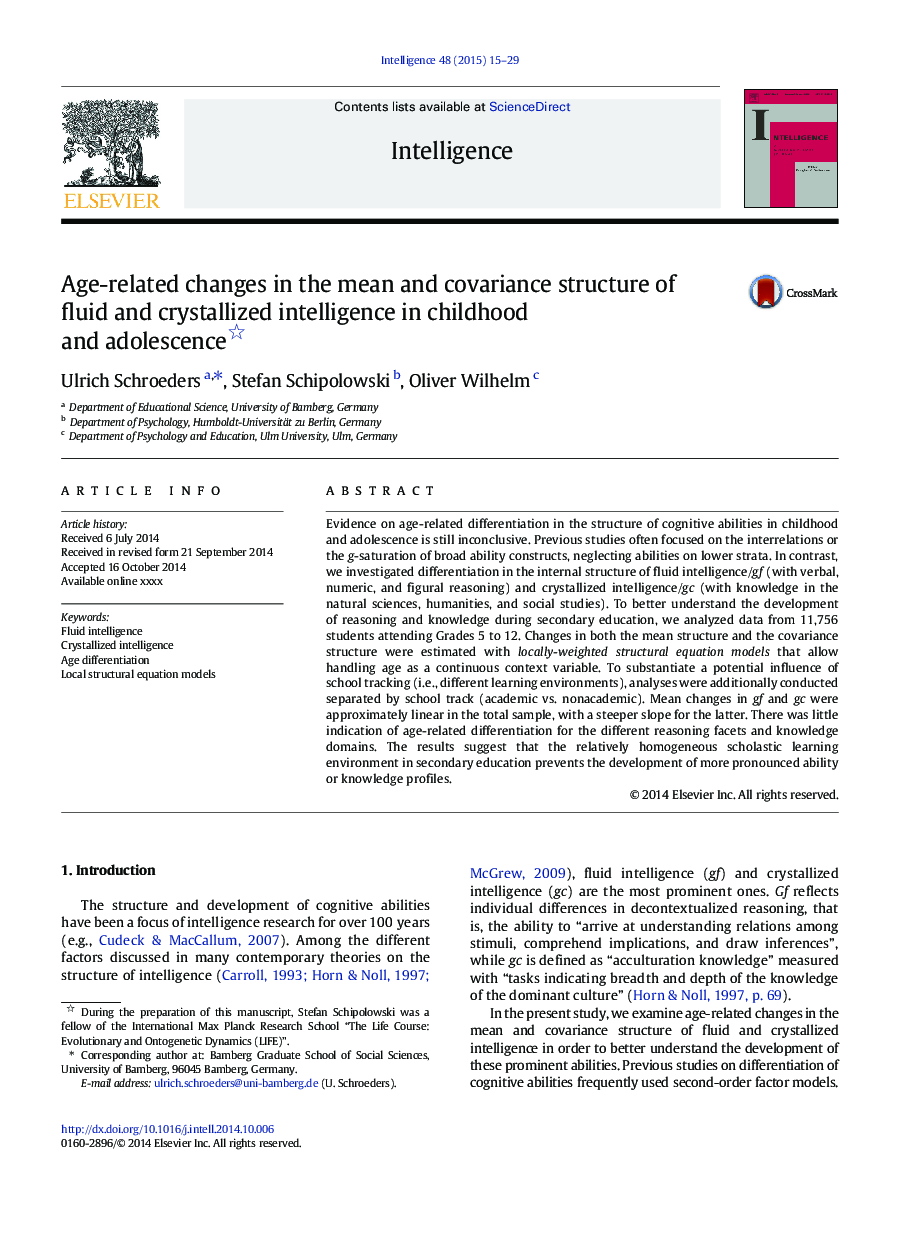| Article ID | Journal | Published Year | Pages | File Type |
|---|---|---|---|---|
| 7294080 | Intelligence | 2015 | 15 Pages |
Abstract
Evidence on age-related differentiation in the structure of cognitive abilities in childhood and adolescence is still inconclusive. Previous studies often focused on the interrelations or the g-saturation of broad ability constructs, neglecting abilities on lower strata. In contrast, we investigated differentiation in the internal structure of fluid intelligence/gf (with verbal, numeric, and figural reasoning) and crystallized intelligence/gc (with knowledge in the natural sciences, humanities, and social studies). To better understand the development of reasoning and knowledge during secondary education, we analyzed data from 11,756 students attending Grades 5 to 12. Changes in both the mean structure and the covariance structure were estimated with locally-weighted structural equation models that allow handling age as a continuous context variable. To substantiate a potential influence of school tracking (i.e., different learning environments), analyses were additionally conducted separated by school track (academic vs. nonacademic). Mean changes in gf and gc were approximately linear in the total sample, with a steeper slope for the latter. There was little indication of age-related differentiation for the different reasoning facets and knowledge domains. The results suggest that the relatively homogeneous scholastic learning environment in secondary education prevents the development of more pronounced ability or knowledge profiles.
Related Topics
Social Sciences and Humanities
Psychology
Experimental and Cognitive Psychology
Authors
Ulrich Schroeders, Stefan Schipolowski, Oliver Wilhelm,
